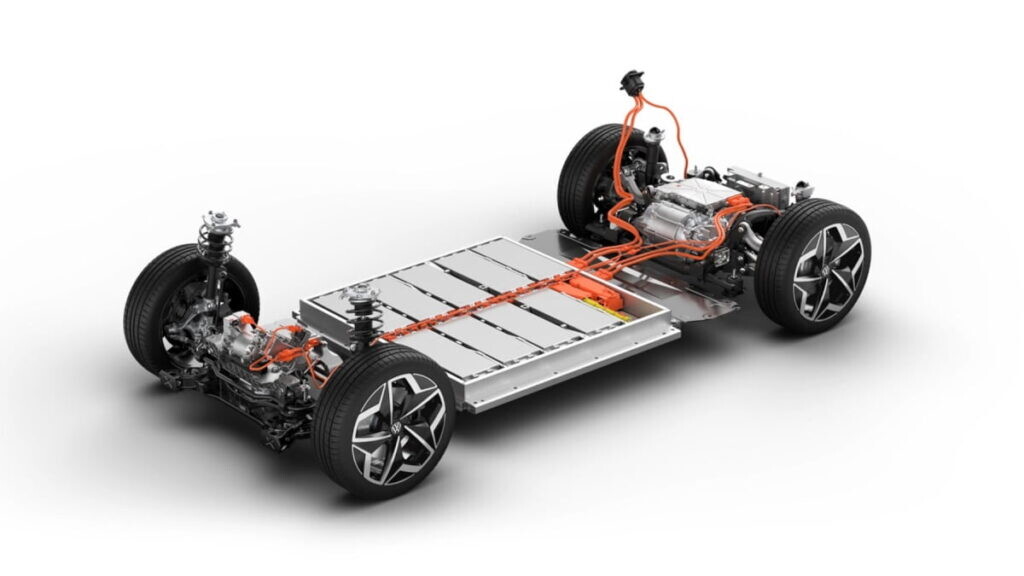Sodium-ion batteries are among the candidates to replace current lithium-ion batteries. In addition to its lower environmental impact, this technology should influence the prices of electric vehicles.
THE sodium-ion batteries do they contain the secret of cheaper electric cars? Engineers are seriously looking into this technology, not entirely new. Despite economic signals rather in favor of drop in demand concerning electric cars, the interest in electrification of certain manufacturers remains increasing. In fact, the release of new pure and hybrid electric models is regularly announced. It seems that production is ahead of demand, slowed down, in part, by the rates. But, manufacturers are seeking to resolve this price equation. Significant reductions would make these vehicles accessible to a greater number of customers. We know that batteries weigh on the final value of an electric car and its environmental footprint. However, these sodium-based batteries undoubtedly represent a good way to obtain cheaper and more durable electric cars.
Sodium-ion batteries, the future energy of electric cars?
THE builders remain attentive to movements in this market. Furthermore, as we have already seen, there are a party that displays its willingness to invest in electric mobility. However, it can be noted that they are only complying with the news government policies. But in a way, they also show that they are looking out for the interests of the planet. Despite the growing importance of electrified vehicles, for many the problem still lies with batteries, due to the costs associated with them.
These are expensive to produce and are only partially recyclable. Their price and environmental impact are gigantic. One of the most controversial components remains, in both senses of the term, lithium. In the search for a solution, sodium-based systems appeared. Fortunately, because it offers manufacturers an alternative to lithium-ion batteries. And, with the associated benefits that it carries, the change will perhaps, we hope, be decisive.
A technology developed since the 1990s
As the specialized site, Autocar, points out, the lithium ion batteries have only become a significant commercial activity in 1990s. After all these years, the sudden shift to electric cars powered by these batteries is curious. It seems that at the time of prototypes, lithium showed itself to be more efficient. But that would no longer be the case today.
However, things are changing extremely quickly in the automotive sector. And, as new technologies and solutions are explored, the downsides are sometimes downplayed. However, we have known for several years that lithium ion batteries present weaknesses in terms of sustainability, energy security and cost. We can easily predict that they will soon be outdated. Sodium-ion batteries (or NA-ion batteries), which have been talked about for some time, but whose development is entering the finalization phase, could come into play. They would then permanently sideline lithium-ion batteries.
Asian manufacturers already ready
At the beginning of January, the Chinese car manufacturer JAC announced that it was supplying a small electric car of its brand Yiwei equipped with sodium-ion battery manufactured by the Hina Battery company. At the same time, Chinese society JMEV also indicated the launch of a new electric vehicle equipped with battery sodium ion designed by Farasis Energy. These announcements highlight the viability of this technology. However, sodium-ion batteries have some disadvantages. They have a flow energy density which induces a significant increase in weight of the vehicle (few Wh/kg compared to lithium technologies). On the other hand, they present a host of advantages.
Among these, we recall that the Sodium exists in abundance throughout the world.Additionally, electrode collectors can be made from aluminum rather than copper (more durable and less expensive). Finally, they perform well in cold conditions and cost 30% less than lithium-ion. Given these advantages, the manufacturers are working to resolve the drawbacks. For example, trying to increase the energy density of sodium-ion batteries without compromising vehicle weight or range. Many scientists are banking on this future solution. Indeed, other technologies, such as graphene, still require investigation.

